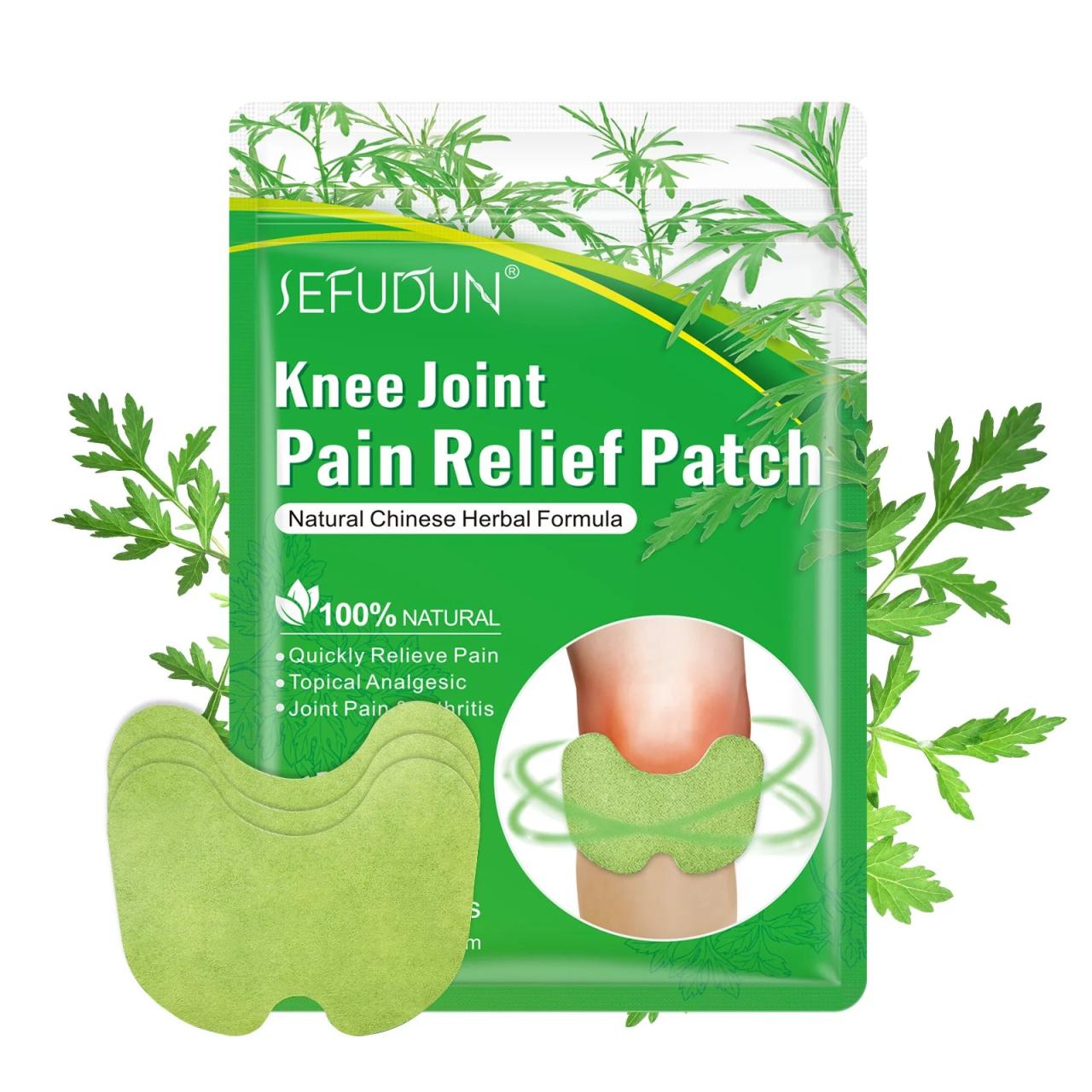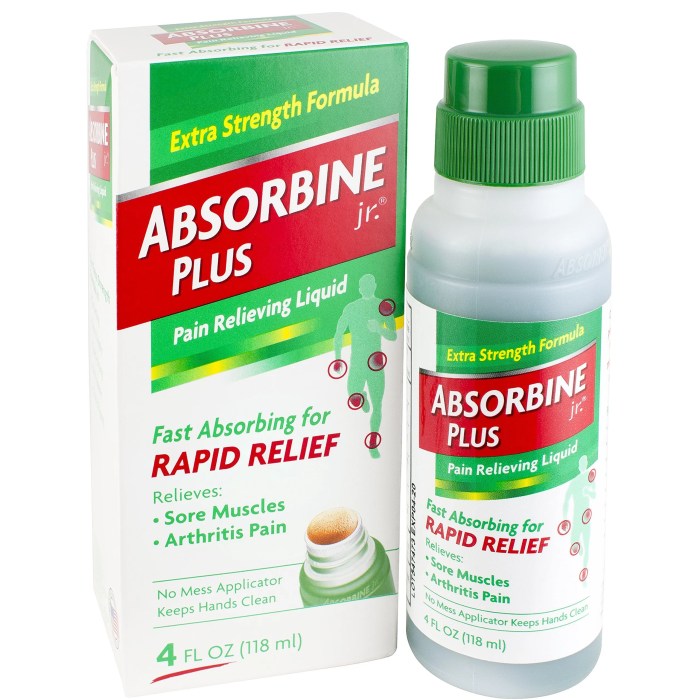Pain Relief Products: Managing Everyday Aches— Tired of those nagging aches and pains? This guide dives deep into the world of pain relief, from understanding the different types of products to choosing the right one for *your* specific needs. We’ll explore everything from over-the-counter remedies to alternative therapies, helping you navigate the landscape of pain management with confidence. From headaches to muscle soreness, we’ll cover the common causes and provide practical strategies for finding relief.
We’ll examine the mechanisms behind various pain relievers, compare different formulations, and discuss the importance of consulting a healthcare professional. Beyond medication, we’ll also explore lifestyle factors and alternative approaches, like heat therapy and relaxation techniques. Get ready to feel better, faster.
Introduction to Pain Relief Products
From nagging headaches to throbbing muscle aches, everyday pain can really throw a wrench in our lives. Thankfully, a wide array of pain relief products are available to help us manage these discomforts. These products utilize different mechanisms to target various pain conditions, offering varying degrees of relief. Understanding these options can empower us to choose the best approach for our individual needs.
Pain relief products come in various forms, from simple over-the-counter medications to more complex prescription treatments. Their mechanisms of action differ, some targeting the source of the pain directly, while others aim to reduce the body’s perception of it. This variety allows us to tailor our pain management strategy to the specific pain we’re experiencing.
Types of Pain Relief Products
Pain relief products are broadly categorized into over-the-counter (OTC) and prescription medications, as well as topical treatments. Each category has its own set of advantages and limitations. Understanding these distinctions can help us make informed choices.
Interactions with Other Medications
Many pain relief products can interact with other medications you might be taking, either enhancing or diminishing their effects. These interactions can range from mild to severe, and some can even be life-threatening. It’s essential to inform your doctor or pharmacist about all the medications you’re currently using, including over-the-counter drugs, supplements, and herbal remedies. This comprehensive approach ensures the safety and effectiveness of your treatment plan.
Avoiding Exceeding Recommended Doses
Taking more of a pain relief product than recommended can significantly increase the risk of side effects. Exceeding the dosage can overwhelm your body’s ability to process the medication, leading to potentially serious consequences. Never increase the dosage without consulting a healthcare professional. Adhering to the prescribed dosage is a crucial step in managing pain safely and effectively.
Common Side Effects and Their Severity (Table)
| Product Type | Common Side Effects | Severity (Mild/Moderate/Severe) | Notes |
|---|---|---|---|
| Nonsteroidal Anti-inflammatory Drugs (NSAIDs) | Indigestion, nausea, dizziness | Mild to Moderate | Taking with food can lessen stomach upset. |
| Acetaminophen (Paracetamol) | Headache, skin rash, dizziness | Mild to Moderate | Can cause liver damage if taken in excess. |
| Opioid Pain Relievers | Drowsiness, constipation, nausea | Moderate to Severe | High risk of addiction; use only as prescribed. |
| Topical Creams/Gels | Skin irritation, redness | Mild to Moderate | Patch test recommended for sensitive skin. |
This table provides a general overview of common side effects. Always consult your healthcare provider for personalized advice.
Illustrative Examples of Pain Relief Products
Navigating the world of pain relief can feel like a minefield. From throbbing headaches to aching muscles, understanding the different types of products available is key to finding effective solutions. This section dives into the specifics, outlining common pain relievers, their mechanisms, and how they’re used.
Common Over-the-Counter Pain Relievers
A variety of over-the-counter (OTC) pain relievers are readily available, each targeting different types of pain. These products often contain active ingredients that work by reducing inflammation or blocking pain signals in the body.
- Ibuprofen (Advil, Motrin): A nonsteroidal anti-inflammatory drug (NSAID), ibuprofen works by inhibiting the production of prostaglandins, molecules responsible for inflammation and pain. It’s effective for various aches and pains, including menstrual cramps, muscle soreness, and headaches. Common dosage forms include tablets, capsules, and liquid suspensions. It’s crucial to follow the recommended dosage on the product label, as exceeding the dosage can lead to potential side effects.
- Acetaminophen (Tylenol): A different type of pain reliever, acetaminophen primarily works by reducing the production of pain signals in the brain. It’s often used for mild to moderate pain, such as headaches, fever, and muscle aches. Acetaminophen is generally considered safer for long-term use than NSAIDs, but it’s still important to follow the recommended dosage. Common dosage forms include tablets, capsules, and liquid suspensions.
- Topical Creams and Gels: These products offer localized pain relief, typically through the application of an active ingredient directly to the affected area. Common active ingredients include menthol, camphor, and salicylates, which create a cooling or warming sensation that can temporarily numb the area and reduce pain perception. These are often used for muscle aches, sprains, and minor injuries. Examples include creams containing ibuprofen or other NSAIDs for topical application.
Product Comparison Table
The table below provides a concise overview of common pain relief products, their dosage forms, and typical uses.
| Product Name | Dosage Form | Recommended Uses |
|---|---|---|
| Ibuprofen (Advil, Motrin) | Tablets, Capsules, Liquid Suspension | Headaches, Muscle Aches, Menstrual Cramps, Toothache |
| Acetaminophen (Tylenol) | Tablets, Capsules, Liquid Suspension | Headaches, Fever, Muscle Aches, Painful Periods |
| Topical Creams (e.g., Icy Hot) | Cream, Gel, Spray | Muscle Aches, Sprains, Minor Injuries |
Active Ingredients Explained
Understanding the active ingredients in pain relief products can help you choose the best option for your needs.
Ibuprofen and other NSAIDs work by blocking the production of prostaglandins, reducing inflammation and pain. Acetaminophen acts differently, reducing pain signals in the central nervous system. Topical creams provide localized relief through cooling or warming effects.
Product Packaging
A typical pain relief product packaging includes essential information to ensure safe and effective use. The label clearly indicates the product name, active ingredients, dosage instructions, warnings, and potential side effects. The packaging often features a distinct color scheme and graphic design to improve product recognition. The size and shape of the packaging can vary depending on the dosage form (e.g., a small bottle for liquid versus a larger box for tablets). Furthermore, the packaging might include information about storage conditions, expiration dates, and directions for use.
Exploring Alternative Pain Relief Methods: Pain Relief Products: Managing Everyday Aches

Source: aliver.com
Beyond over-the-counter pills and prescription drugs, a world of alternative pain relief methods awaits. These techniques, often rooted in ancient practices and holistic approaches, can offer effective pain management alongside or as an alternative to conventional treatments. Understanding these methods can help you find relief in a way that complements your overall well-being.
Heat Therapy
Heat therapy utilizes warmth to increase blood flow to the affected area, promoting relaxation and reducing muscle tension. This increased circulation can help deliver nutrients and remove waste products, leading to a soothing effect. Common applications include warm compresses, heating pads, and warm baths.
Cold Therapy
Cold therapy, conversely, constricts blood vessels, reducing inflammation and swelling. This approach is often used for acute injuries or pain associated with inflammation. Ice packs, cold compresses, and ice baths are common methods. The numbing sensation can provide temporary relief from pain signals.
Massage Therapy
Massage therapy involves manipulating soft tissues, like muscles and tendons, to alleviate pain and tension. Different types of massage, such as Swedish massage, deep tissue massage, or sports massage, can target specific areas of pain and promote relaxation. This can improve circulation and reduce muscle spasms.
Benefits and Drawbacks of Alternative Methods
These methods, while often safe and effective, have their own sets of benefits and drawbacks. Their efficacy can vary based on the individual and the type of pain.
Comparison with Traditional Pain Relief Products
Traditional pain relief products often provide quick relief but can have side effects and potential long-term consequences. Alternative methods, while not always immediate, can be a complement or an alternative to traditional treatments, offering a holistic approach to pain management.
Table: Benefits and Risks of Pain Relief Methods
| Method | Benefits | Risks |
|---|---|---|
| Heat Therapy | Increased blood flow, muscle relaxation, reduced inflammation (in some cases), temporary pain relief | Potential for burns if applied incorrectly or for prolonged periods, may exacerbate existing conditions if applied to inflamed areas |
| Cold Therapy | Reduced inflammation, reduced swelling, temporary pain relief, numbing sensation | Potential for frostbite, skin irritation if applied for prolonged periods, not suitable for all types of pain |
| Massage Therapy | Improved circulation, muscle relaxation, reduced muscle spasms, stress relief, potential reduction in pain | Potential for bruising or discomfort, may not be suitable for certain medical conditions, can be expensive |
| Over-the-Counter Pain Relievers | Fast pain relief, readily available | Potential for side effects (stomach upset, liver damage), potential for addiction, masking underlying issues |
Final Review
So, there you have it—a comprehensive look at pain relief products and strategies for managing everyday aches. Remember, understanding your pain, choosing the right product, and incorporating effective strategies like rest and lifestyle changes are key to finding lasting relief. By arming yourself with knowledge and taking proactive steps, you can conquer those everyday aches and reclaim your comfort. This guide is your starting point; now go forth and feel amazing!
Dealing with those everyday aches and pains? Pain relief products are a lifesaver, but did you know oral health plays a huge role in overall well-being? For instance, check out Oral Health Essentials: Upgrading Your Dental Routine for tips on keeping your pearly whites sparkling. Strong teeth and gums contribute to a healthier body, which, in turn, helps manage those pesky aches and pains more effectively.
So, next time you reach for a pain reliever, remember to prioritize your oral health too!
